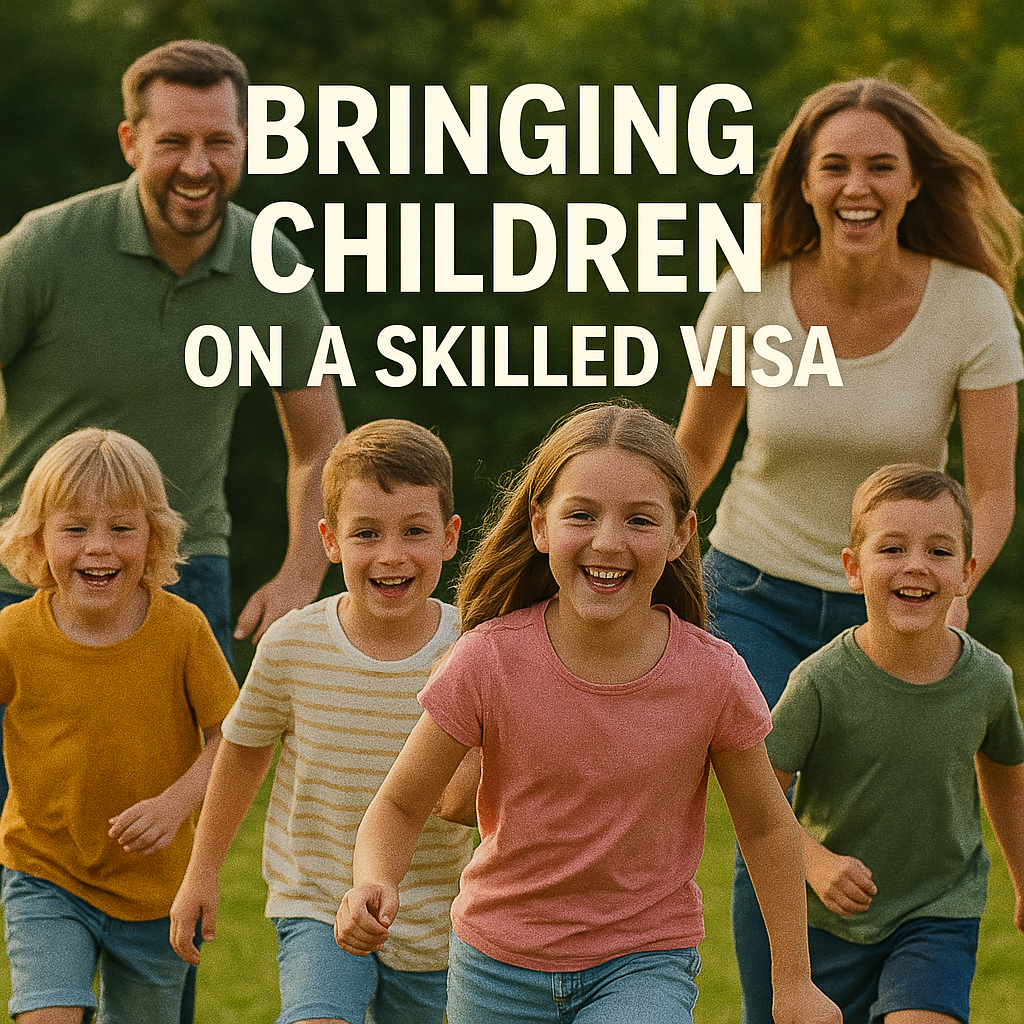A step-by-step guide on bringing children on a skilled visa to Australia, including dependent child visa requirements, eligibility, and the application process.
Introduction
Bringing children on a skilled visa when relocating to a new country like Australia involves specific immigration procedures. This guide outlines the key steps to add children to a skilled worker visa, ensuring a smooth transition for your entire family. The process often varies based on whether the child is applying from within or outside Australia and their age.
Step 1: Understanding Child Visa Eligibility and Types
For skilled migrants, bringing children on a skilled visa typically involves applying for a dependent child visa. In Australia, child migration allows parents who are Australian citizens, permanent residents, or eligible New Zealand citizens to bring their children to live with them.
There are two main child visa subclasses in Australia:
- Subclass 101 (Child visa): For children applying from outside Australia.
- Subclass 802 (Child visa): For children applying when they are in Australia.
Both are permanent visas, allowing the child to live in Australia permanently with their parent. The child can be a biological child, adopted child, or stepchild from a former partner.
Eligibility criteria for the child generally require them to be:
- Under 18 years of age, or
- A full-time student aged 18 to under 25 and financially dependent on the parent, or
- Over 18 and unable to work due to a disability that prevents them from working.
The parent sponsoring the child must provide evidence of their relationship and meet specific health and character requirements. If a child was adopted after the parent became an Australian citizen or permanent resident, they cannot apply for a Subclass 101 visa and might need to consider an Adoption (subclass 102) visa.
Additionally, the Subclass 445 (Dependent Child visa) is a temporary visa that allows a child to stay in Australia while their parent’s permanent Partner visa application is being processed.
Step 2: Gathering Required Documents and Meeting Conditions
The crucial second step in the skilled migration process for dependents is to compile all necessary documentation and meet specific conditions. This includes providing evidence of the relationship between the child and the sponsoring parent.
Key documents and requirements typically include:
- Proof of relationship: Birth certificates, adoption papers, or other legal documents confirming the parent-child relationship.
- Health requirements: All applicants must meet Australia’s health standards, which may involve medical examinations.
- Character requirements: Children over a certain age will need to meet character requirements, which can involve police checks.
- Financial dependency evidence: For children over 18 but under 25, evidence of full-time student status and financial dependency on the parent is required.
- Age and marital status: The child must generally be single and meet the age criteria.
It is important to note that if a child is joining a parent on a Subclass 491 Skilled Work Regional (Provisional) visa, the sponsoring relative must be an Australian citizen, permanent resident, or eligible New Zealand citizen, be usually resident in a designated regional area, and be at least 18 years old.
Step 3: Application Submission and Post-Lodgment Considerations
Once all documentation is prepared, the next step involves submitting the visa application. The application method depends on whether the child is inside or outside Australia. The Australian government is also committed to simplifying its immigration processes, including for skilled migration, which may introduce new visa types and streamlined procedures.
After lodging the application for moving with kids on a skilled visa, processing times can vary 67. It’s crucial to respond promptly to any requests for additional information from the Department of Home Affairs to avoid delays. For example, the Subclass 491 visa processing times have previously been delayed.
Once the child visa is granted, the child will have permanent residency and be entitled to various benefits, including access to Australia’s public health system (Medicare) and public education 6.
Early Preparation and Attention
Successfully bringing children on a skilled visa to Australia involves understanding eligibility, meticulously gathering documents, and navigating the application process. Early preparation and attention to detail are key to ensuring your children can join you and thrive in your new country.

